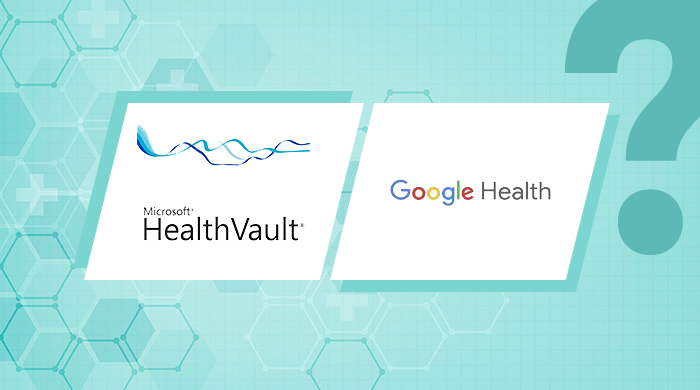
Why Microsoft HealthVault and Google Health failed?
The personal health records (PHRs) and the Electronic Health Records (EHRs) have seen a lot of talk. Moreover, rightly so. The idea of having a consolidated patient reporting system, inter-portability sounds fascinating. Hence, it is not surprising that big tech giants jumped in the bandwagon of creating digital health records management system. But, as time have proved – the game is much more difficult to win that it apparently looks. Reasons are many.
Microsft’s HealthVault and Google Health are two big-ticket products which started with much press when they launched in the EHR space. However, both Microsft and Google had to shut off their product in recent days. Why? Let us look at the few problems that make this space difficult.
Users are interested but not serious
Everybody understand the importance of health. But, very few are serious about it. Managing health records actively is something not many users do – even if they are provided with a system. Across the world, healthcare is mostly curative and very little preventive. That is only because people are not serious about their health until they are diagnosed with something. After Google Health closed down Adam Bosworth, one of the core team member of Google Health told TechCrunch, “Our data shows people don’t really want a place to store data, per se. They want to do something fun and engaging. If it’s not fun, if it’s not social, why would they do it? Yes, they want to be healthy, but they need more than that. They need the encouragement and even the pressure of friends. They need the constant pressure, constant reminders.” Many recent days healthcare app have been built on this particular feedback of Bosworth where we see healthcare apps are constantly becoming social allowing users to compete with each other in terms of their health parameters.
Service Providers never wanted to share data
Just where banking apps succeeded in providing the end user a lot flexibility in moving their money from one account to another, health record apps could not do the same. From hospitals to insurance companies – no service provider was willing to share data on these Apps. The condition remains true even today. Microsoft could not make prescriptions get automatically pulled into HealthVault after a patient leaves the Doctor’s chambers, Google could not get Insurance companies to agree to update records automatically. All service providers feared that once given an auto access to the patients, they will lose control and end-users will move on to other service providers. This futile effort to hold on to the customers by making exit difficult made it difficult for the health record apps like Google Health and Microsoft HealthVault to survive.
Lack of patience, Lack of Marketing
For some reason both Google and Microsoft HealthVault lost patience in the Health Record business. Despite promising that they are in it for long, they shut shop much earlier than one would have imagined. The efforts were half hearted from both companies even in terms of their marketing efforts. One famous joke in open market was, people had to Google to find out Google Health. The story was not very different for Micrososft HealthVault too. From design UI to marketing, the product never had the exuberance of Microsoft brand.
If Google and Microsoft HealthVault had had more patience with patients (and doctors) getting comfortable with online e-health records, and had addressed some of its major weaknesses, the products probably could have been successful. The electronic health record space is still vacant. There are a number of players who are trying to make a mark in this space in many ways. However, the failure of Google and Microsoft have shows us that the space is not for the weak hearted. Only those who could hold on for longer period will survive.